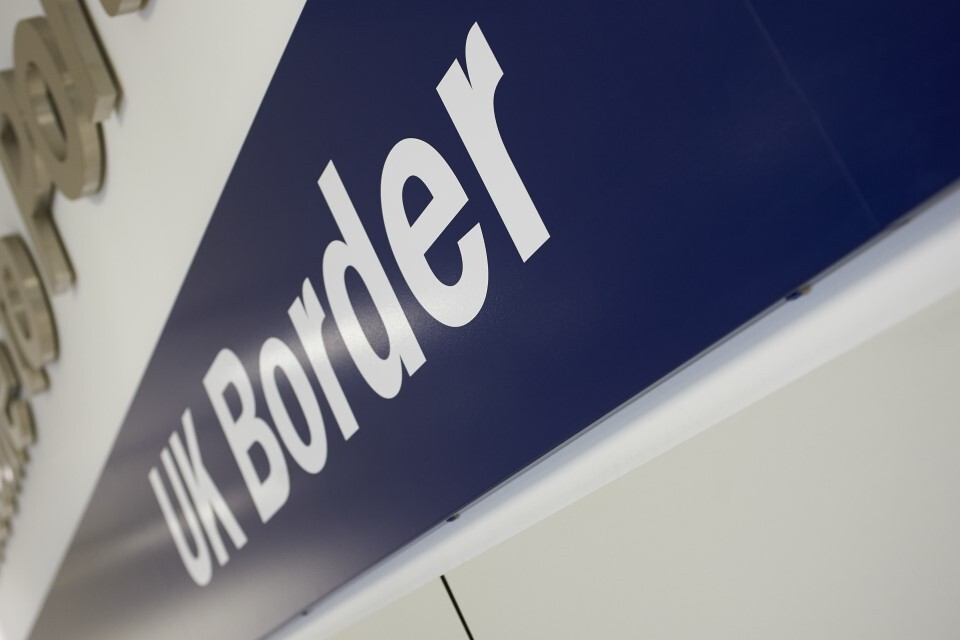Impact of Nationality and Borders Act 2022 felt as asylum grant rate down from high of 77% in 2022 to 48%
The latest Home Office immigration statistics published yesterday (covering the year to June 2025) show that the positive grant rate for initial asylum decisions has now dropped below 50%, largely as a result of the higher standard of proof needed for a positive decision under the Nationality and Borders Act 2022.
 The Home Office noted: "Just under half (48%) of claims (excluding dependants) which received an initial decision in the year ending June 2025 were granted, a smaller proportion compared to the year ending June 2024 (58%) and below the peak of 77% in the year ending September 2022. This decrease in grant rate reflects that the majority of cases issued with a decision since the start of 2024 have been subject to the Nationality and Borders Act 2022, under which claims are required to meet a higher standard of proof for a grant of protection."
The Home Office noted: "Just under half (48%) of claims (excluding dependants) which received an initial decision in the year ending June 2025 were granted, a smaller proportion compared to the year ending June 2024 (58%) and below the peak of 77% in the year ending September 2022. This decrease in grant rate reflects that the majority of cases issued with a decision since the start of 2024 have been subject to the Nationality and Borders Act 2022, under which claims are required to meet a higher standard of proof for a grant of protection."
In the year ending June 2025, grant rates for some nationalities declined sharply: positive decisions for Afghan claims fell from 96% in the previous year to 40%, while Turkish claims dropped from 51% to 19%. By contrast, some nationalities continue to have very high grant rates, with 98% of claims from Sudan and Syria granted, and 87% from Eritrea.
As was widely reported in the media yesterday, the overall number of people claiming asylum in the UK in the 12-month period ending June 2025 reached a record high of 111,084, an 8% increase over the previous peak of 103,081 in 2002. Despite the record high, the UK still received fewer asylum claims than the other four major European countries - Germany recorded 218,550 asylum claims in the same period, Spain 164,830, France 159,260, and Italy recorded 151,525.
The top twenty nationalities claiming asylum in the UK in the year ending June 2025 were as follows:
- Pakistan (11,234 claims)
- Afghanistan (8,281)
- Iran (7,746)
- Eritrea (7,433)
- Bangladesh (6,649)
- India (5,475)
- Sudan (5,370)
- Syria (5,273)
- Vietnam (3,818)
- Somalia (3,062)
- Iraq (2,987)
- Nigeria (2,769)
- Brazil (2,640)
- Yemen (2,633))
- Albania (2,531)
- Turkey (2,488)
- Kuwait (2,440)
- Sri Lanka (2,411)
- Ukraine (1,730)
- Ethiopia (1,605)
Most of those claiming asylum in the year ending June 2025 entered the UK through irregular routes, though a sizeable 37% had initially entered on a visa or other leave, only slightly lower than the 39% who claimed asylum after arriving by small boat across the Channel.
While the Home Office notes that asylum claims have increased across all main visa routes (work, study, and visit) over the last three years, it further notes that this trend mirrors the overall increase in work and study visas across the same period. Percentages claiming asylum remain very low: in the most recent year, asylum claimants made up just 1% of those granted work visas and 3% of those granted study visas.
The backlog of asylum cases awaiting an initial decision declined by 18% compared to the previous year, with 70,532 asylum cases (covering 90,812 people) in the backlog as of the end of June 2025. The United Nations High Commissioner for Refugees (UNHCR) said on social media: "This is a welcome development. Work to ensure efficient, quality decision making should be sustained to build a resilient asylum system."
The Refugee Council also welcomed the reduction, highlighting that it is the first time in four years the backlog has fallen below 100,000. While the Refugee Council said the overall picture revealed by the immigration statistics was mixed, CEO Enver Solomon highlighted a number of positive developments and commented: "Bringing the asylum system back from the brink of collapse is a genuine achievement in the government's first year."
Dr Madeleine Sumption, Director of the Migration Observatory at the University of Oxford, noted, however: "Although the initial decision backlog is down since Labour came to office, a new backlog has built up in the courts due to appeals against unsuccessful decisions."
The Migration Observatory has a helpful, short summary of yesterday's immigration statistics here. As it highlights, residence visa grants fell by a significant 32% in the year ending June 2025 compared to the previous year, with work visas down by 48%. The Home Office noted that the number of 'Health and Care Worker' visas fell dramatically, down by 77%.
Explaining the overall reduction in work visas, the Home Office said: "The fall in total work numbers which began towards the end of 2023 is likely due to more scrutiny applied by the Home Office to employers in the health and social care sector, and compliance activity taken against employers who did not fulfil their obligations as employers of migrant workers, as well as the recent policy measures affecting care workers introduced in Spring 2024. In December 2023, the Home Office announced policy changes for work visas, which came into effect at various points in 2024. While 'Health and Care Worker' visa applications had already begun to decline, there was a brief spike in applications for 'Skilled Worker' visas immediately prior to the implementation of these changes."